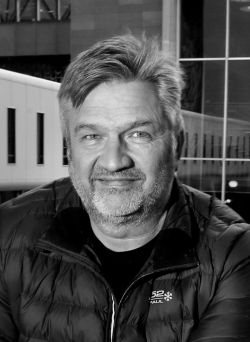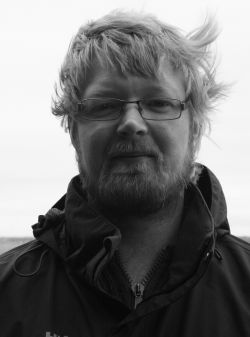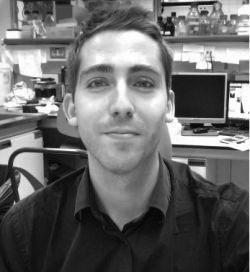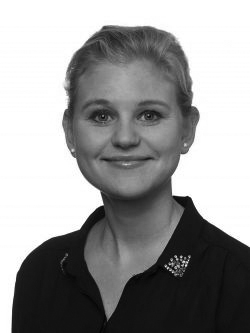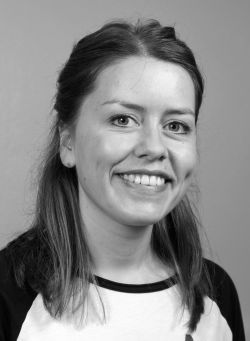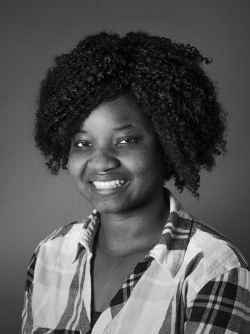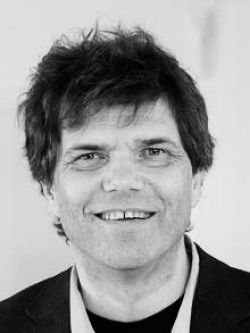
DigiBrain
From genes to brain function in health and disease
Project overview
Project lead: Marianne Fyhn
Institution: University of Oslo
Partners: Oslo universitetssykehus (SFF Norment), Simula Research Laboratory, NMBU, Kavli Institute for Systems Neuroscience, Pharmasum Therapeutics AS og Holberg EEG AS
Funding: NOK 40 mill.
Duration: 2016–2021
Publications
-
Ager-Wick, Eirill; Maugars, Gersende Marie Aimee; von Krogh, Kristine; Fontaine, Romain; Weltzien, Finn-Arne & Henkel, Christiaan (2023). An RNA-seq time series of the medaka pituitary gland during sexual maturation. Scientific Data. ISSN 2052-4463. doi: 10.1038/s41597-023-01967-w.
-
Skaar, Jan-Eirik Welle; Haug, Nicolai; Stasik, Alexander Johannes; Einevoll, Gaute & Tøndel, Kristin (2023). Metamodelling of a two-population spiking neural network. PLoS Computational Biology. ISSN 1553-734X. 19(11). doi: 10.1371/journal.pcbi.1011625. Full text in Research Archive
-
Akkouh, Ibrahim Ahmed; Ueland, Thor; Szabo, Attila; Hughes, Timothy; Smeland, Olav Bjerkehagen & Andreassen, Ole [Show all 8 contributors for this article] (2023). Longitudinal Transcriptomic Analysis of Human Cortical Spheroids Identifies Axonal Dysregulation in the Prenatal Brain as a Mediator of Genetic Risk for Schizophrenia. Biological Psychiatry. ISSN 0006-3223. 0, p. 1–12. doi: 10.1016/j.biopsych.2023.08.017. Full text in Research Archive
-
Mäki-Marttunen, Tuomo & Mäki-Marttunen, Verónica (2022). Excitatory and inhibitory effects of HCN channel modulation on excitability of layer V pyramidal cells. PLoS Computational Biology. ISSN 1553-734X. 18(9). doi: 10.1371/journal.pcbi.1010506. Full text in Research Archive
-
Koivumäki, Jussi T.; Hoffman, Johan; Maleckar, Mary Margot Catherine; Einevoll, Gaute & Sundnes, Joakim (2022). Computational cardiac physiology for new modelers: Origins, foundations, and future. Acta Physiologica. ISSN 1748-1708. 236. doi: 10.1111/apha.13865. Show summary
-
Royan, Muhammad Rahmad; Siddique, Khadeeja; Csucs, Gergely; Puchades, Maja ; Nourizadeh-Lillabadi, Rasoul & Bjaalie, Jan G. [Show all 9 contributors for this article] (2021). 3D Atlas of the Pituitary Gland of the Model Fish Medaka (Oryzias latipes). Frontiers in Endocrinology. ISSN 1664-2392. 12. doi: 10.3389/fendo.2021.719843. Full text in Research Archive Show summary
-
Lepperød, Mikkel Elle; Christensen, Ane Charlotte; Lensjø, Kristian Kinden; Buccino, Alessio Paolo; Yu, Jai & Fyhn, Marianne [Show all 7 contributors for this article] (2021). Optogenetic pacing of medial septum parvalbumin-positive cells disrupts temporal but not spatial firing in grid cells. Science Advances. ISSN 2375-2548. 7(19). doi: 10.1126/sciadv.abd5684. Full text in Research Archive
-
Christensen, Ane Charlotte; Lensjø, Kristian Kinden; Lepperød, Mikkel Elle; Dragly, Svenn-Arne; Sutterud, Hallvard & Blackstad, Jan Sigurd [Show all 8 contributors for this article] (2021). Perineuronal nets stabilize the grid cell network. Nature Communications. ISSN 2041-1723. 12. doi: 10.1038/s41467-020-20241-w. Full text in Research Archive
-
Rødevand, Linn ; Bahrami, Shahram; Frei, Oleksandr; Lin, Aihua; Gani, Osman & Shadrin, Alexey A. [Show all 18 contributors for this article] (2021). Polygenic overlap and shared genetic loci between loneliness, severe mental disorders, and cardiovascular disease risk factors suggest shared molecular mechanisms. Translational Psychiatry. ISSN 2158-3188. 11(1). doi: 10.1038/s41398-020-01142-4. Full text in Research Archive Show summary
-
Engh, John; Ueland, Thor; Agartz, Ingrid; Andreou, Dimitrios; Aukrust, Pål & Boye, Birgitte [Show all 27 contributors for this article] (2021). Plasma Levels of the Cytokines B Cell-Activating Factor (BAFF) and A Proliferation-Inducing Ligand (APRIL) in Schizophrenia, Bipolar, and Major Depressive Disorder: A Cross Sectional, Multisite Study. Schizophrenia Bulletin. ISSN 0586-7614. 48(1), p. 37–46. doi: 10.1093/schbul/sbab106. Show summary
-
Sætra, Marte Julie; Einevoll, Gaute & Halnes, Geir (2021). An electrodiffusive neuron-extracellular-glia model for exploring the genesis of slow potentials in the brain. PLoS Computational Biology. ISSN 1553-734X. 17(7). doi: 10.1371/journal.pcbi.1008143. Full text in Research Archive Show summary
-
Lehr, Andrew; Kumar, Arvind; Tezlaff, Christian; Hafting, Torkel; Fyhn, Marianne & Stöber, Tristan Manfred (2021). CA2 beyond social memory: Evidence for a fundamental role in hippocampal information processing. Neuroscience and Biobehavioral Reviews. ISSN 0149-7634. 126, p. 398–412. doi: 10.1016/j.neubiorev.2021.03.020. Full text in Research Archive Show summary
-
Mäki-Marttunen, Tuomo; Iannella, Nicolangelo Libero; Edwards, Andrew; Einevoll, Gaute & Blackwell, Kim T. (2020). A unified computational model for cortical post-synaptic plasticity. eLIFE. ISSN 2050-084X. 9, p. 1–37. doi: 10.7554/eLife.55714. Full text in Research Archive
-
Stöber, Tristan Manfred; Lehr, Andrew B; Hafting, Torkel; Kumar, Arvind & Fyhn, Marianne (2020). Selective neuromodulation and mutual inhibition within the CA3-CA2 system can prioritize sequences for replay. Hippocampus. ISSN 1050-9631. doi: 10.1002/hipo.23256. Full text in Research Archive
-
Sætra, Marte Julie; Solbrå, Andreas Våvang; Devor, Anna; Sakadžić, Sava; Dale, Anders M. & Einevoll, Gaute (2020). Spatially Resolved Estimation of Metabolic Oxygen Consumption From Optical Measurements in Cortex. Neurophotonics. ISSN 2329-423X. 7(3). doi: 10.1117/1.NPh.7.3.035005. Full text in Research Archive
-
Fontaine, Romain; Ager-Wick, Eirill; Hodne, Kjetil & Weltzien, Finn-Arne (2020). Plasticity in medaka gonadotropes via cell proliferation and phenotypic conversion. Journal of Endocrinology. ISSN 0022-0795. 245(1), p. 21–37. doi: 10.1530/JOE-19-0405. Full text in Research Archive
-
Sætra, Marte Julie; Einevoll, Gaute & Halnes, Geir (2020). An electrodiffusive, ion conserving Pinsky-Rinzel model with homeostatic mechanisms. PLoS Computational Biology. ISSN 1553-734X. 16(4), p. 1–36. doi: 10.1371/journal.pcbi.1007661. Full text in Research Archive
-
Burow, Susann; Mizrahi, Naama; Maugars, Gersende Marie Aimee; von Krogh, Kristine; Nourizadeh-Lillabadi, Rasoul & Hollander-Cohen, Lian [Show all 10 contributors for this article] (2020). Characterization of gonadotropin receptors Fshr and Lhr in Japanese medaka, Oryzias latipes. General and Comparative Endocrinology. ISSN 0016-6480. 285, p. 1–16. doi: 10.1016/j.ygcen.2019.113276. Full text in Research Archive
-
Lepperød, Mikkel Elle; Dragly, Svenn-Arne; Buccino, Alessio Paolo; Mobarhan, Milad; Malthe-Sørenssen, Anders & Hafting, Torkel [Show all 7 contributors for this article] (2020). Experimental Pipeline (Expipe): A Lightweight Data Management Platform to Simplify the Steps From Experiment to Data Analysis. Frontiers in Neuroinformatics. ISSN 1662-5196. 14. doi: 10.3389/fninf.2020.00030. Full text in Research Archive Show summary
-
Mäki-Marttunen, Tuomo; Krull, Florian; Bettella, Francesco; Hagen, Espen; Næss, Solveig & Ness, Torbjørn V [Show all 16 contributors for this article] (2019). Alterations in schizophrenia-associated genes can lead to increased power in delta oscillations. Cerebral Cortex. ISSN 1047-3211. 29(2), p. 875–891. doi: 10.1093/cercor/bhy291. Full text in Research Archive
-
Lee, Phil H.; Antilla, Verneri; Won, Hyejung; Feng, Yen-Chen A.; Rosenthal, Jacob & Zhu, Zhaozhong [Show all 66 contributors for this article] (2019). Genomic Relationships, Novel Loci, and Pleiotropic Mechanisms across Eight Psychiatric Disorders. Cell. ISSN 0092-8674. 179(7), p. 1469–1482. doi: 10.1016/j.cell.2019.11.020. Full text in Research Archive
-
Tennøe, Simen; Hodne, Kjetil; Haug, Trude; Weltzien, Finn-Arne; Einevoll, Gaute & Halnes, Geir (2019). [Re] Fast-Activating Voltage- and Calcium-Dependent Potassium (BK) Conductance Promotes Bursting in Pituitary Cells: A Dynamic Clamp Study. ReScience. ISSN 2430-3658. 5(1). doi: 10.5281/zenodo.2611252. Full text in Research Archive
-
Fontaine, Romain David & Weltzien, Finn-Arne (2019). Labeling of blood vessels in the teleost brain and pituitary using cardiac perfusion with a dil-fixative. Journal of Visualized Experiments. ISSN 1940-087X. 148. doi: 10.3791/59768. Show summary
-
Raheel, Tayyaba Qureshi; Sørensen, Christina; Berghuis, Paul; Jensen, Vidar; Dobszay, Marton B. & Farkas, Tamás [Show all 14 contributors for this article] (2019). The glutamine transporter Slc38a1 regulates GABAergic neurotransmission and synaptic plasticity. Cerebral Cortex. ISSN 1047-3211. 29(12), p. 5166–5179. doi: 10.1093/cercor/bhz055. Full text in Research Archive
-
Burow, Susann; Fontaine, Romain; von Krogh, Kristine; Mayer, Ian; Nourizadeh-Lillabadi, Rasoul & Hollander-Cohen, Lian [Show all 10 contributors for this article] (2019). Data on Western blot and ELISA analysis of medaka (Oryzias latipes) follicle-stimulating hormone (Fsh) and luteinizing hormone (Lh) using recombinant proteins expressed with Pichia pastoris. Data in Brief. ISSN 2352-3409. 22, p. 1057–1063. doi: 10.1016/j.dib.2019.01.034. Full text in Research Archive
-
Mäki-Marttunen, Tuomo; Kaufmann, Tobias; Elvsåshagen, Torbjørn; Devor, Anna; Djurovic, Srdjan & Westlye, Lars Tjelta [Show all 23 contributors for this article] (2019). Biophysical Psychiatry—How Computational Neuroscience Can Help to Understand the Complex Mechanisms of Mental Disorders. Frontiers in Psychiatry. ISSN 1664-0640. 10. doi: 10.3389/fpsyt.2019.00534. Full text in Research Archive
-
O`Connell, Kevin; Shadrin, Alexey A.; Smeland, Olav Bjerkehagen; Bahrami, Shahram; Frei, Oleksandr & Bettella, Francesco [Show all 24 contributors for this article] (2019). Identification of genetic loci shared between ADHD, intelligence and educational attainment . Biological Psychiatry. ISSN 0006-3223. 87(12), p. 1052–1062. doi: 10.1016/j.biopsych.2019.11.015. Full text in Research Archive
-
Burow, Susann; Fontaine, Romain; von Krogh, Kristine; Mayer, Ian; Nourizadeh-Lillabadi, Rasoul & Hollander-Cohen, Lian [Show all 10 contributors for this article] (2019). Medaka Follicle-stimulating hormone (Fsh) and Luteinizing hormone (Lh): Developmental profiles of pituitary protein and gene expression levels. General and Comparative Endocrinology. ISSN 0016-6480. 272, p. 93–108. doi: 10.1016/j.ygcen.2018.12.006. Show summary
-
Fontaine, Romain David; Ciani, Elia; Haug, Trude M; Hodne, Kjetil; Ager-Wick, Eirill & Baker, Dianne [Show all 7 contributors for this article] (2019). Gonadotrope plasticity at cellular, population and structural levels: A comparison between fishes and mammals. General and Comparative Endocrinology. ISSN 0016-6480. 287, p. 1–20. doi: 10.1016/j.ygcen.2019.113344. Full text in Research Archive Show summary
-
Halnes, Geir; Tennøe, Simen; Haug, Trude; Einevoll, Gaute; Weltzien, Finn-Arne & Hodne, Kjetil (2019). A computational model for gonadotropin releasing cells in the teleost fish medaka. PLoS Computational Biology. ISSN 1553-734X. 15(8), p. 1–28. doi: 10.1371/journal.pcbi.1006662. Full text in Research Archive Show summary
-
Rødevand, Linn ; Steen, Nils Eiel; Elvsåshagen, Torbjørn; Quintana, Daniel; Reponen, Elina Johanna & Mørch, Ragni Helene [Show all 12 contributors for this article] (2019). Cardiovascular risk remains high in schizophrenia with modest improvements in bipolar disorder during past decade. Acta Psychiatrica Scandinavica. ISSN 0001-690X. 139(4), p. 348–360. doi: 10.1111/acps.13008. Show summary
-
Buccino, Alessio Paolo; Kordovan, Michael; Ness, Torbjørn V; Merkt, Benjamin; Häfliger, Philipp & Fyhn, Marianne [Show all 9 contributors for this article] (2018). Combining biophysical modeling and deep learning for multielectrode array neuron localization and classification. Journal of Neurophysiology. ISSN 0022-3077. 120(3), p. 1212–1232. doi: 10.1152/jn.00210.2018. Full text in Research Archive
-
Fontaine, Romain; Hodne, Kjetil & Weltzien, Finn-Arne (2018). Healthy Brain-pituitary Slices for Electrophysiological Investigations of Pituitary Cells in Teleost Fish. Journal of Visualized Experiments. ISSN 1940-087X. 2018(138). doi: 10.3791/57790. Full text in Research Archive Show summary
-
Mäki-Marttunen, Tuomo; Halnes, Geir; Devor, Anna; Metzner, Christoph; Dale, Anders M. & Andreassen, Ole Andreas [Show all 7 contributors for this article] (2018). A stepwise neuron model fitting procedure designed for recordings with high spatial resolution: Application to layer 5 pyramidal cells. Journal of Neuroscience Methods. ISSN 0165-0270. 293, p. 264–283. doi: 10.1016/j.jneumeth.2017.10.007. Full text in Research Archive
-
Martínez-Cañada, Pablo; Mobarhan, Milad; Halnes, Geir; Fyhn, Marianne; Morillas, Christian & Pelayo, Francisco [Show all 7 contributors for this article] (2018). Biophysical network modeling of the dLGN circuit: Effects of cortical feedback on spatial response properties of relay cells. PLoS Computational Biology. ISSN 1553-734X. 14(1), p. 1–45. doi: 10.1371/journal.pcbi.1005930. Full text in Research Archive
-
Dragly, Svenn-Arne; Mobarhan, Milad; Lepperød, Mikkel Elle; Tennøe, Simen; Fyhn, Marianne & Hafting, Torkel [Show all 7 contributors for this article] (2018). Experimental directory structure (Exdir): An alternative to HDF5 without introducing a new file format. Frontiers in Neuroinformatics. ISSN 1662-5196. 12. doi: 10.3389/fninf.2018.00016.
-
Buccino, Alessio Paolo; Lepperød, Mikkel Elle; Dragly, Svenn-Arne; Häfliger, Philipp; Fyhn, Marianne & Hafting, Torkel (2018). Open source modules for tracking animal behavior and closed-loop stimulation based on Open Ephys and Bonsai. Journal of Neural Engineering. ISSN 1741-2560. 15, p. 1–12. doi: 10.1088/1741-2552/aacf45. Full text in Research Archive
-
Gratiy, Sergey L.; Halnes, Geir; Denman, Daniel; Hawrylycz, Michael J; Koch, Christof & Einevoll, Gaute [Show all 7 contributors for this article] (2017). From Maxwell's equations to the theory of current-source density analysis. European Journal of Neuroscience. ISSN 0953-816X. 45(8), p. 1013–1023. doi: 10.1111/ejn.13534. Full text in Research Archive
-
Halnes, Geir; Mäki-Marttunen, Tuomo; Pettersen, Klas; Andreassen, Ole Andreas & Einevoll, Gaute (2017). Ion diffusion may introduce spurious current sources in current-source density (CSD) analysis. Journal of Neurophysiology. ISSN 0022-3077. 118(1), p. 114–120. doi: 10.1152/jn.00976.2016. Full text in Research Archive
-
Tveito, Aslak; Jæger, Karoline Horgmo; Lines, Glenn Terje; Paszkowski, Lukasz; Sundnes, Joakim & Edwards, Andrew [Show all 9 contributors for this article] (2017). An evaluation of the accuracy of classical models for computing the membrane potential and extracellular potential for neurons. Frontiers in Computational Neuroscience. ISSN 1662-5188. 11. doi: 10.3389/fncom.2017.00027. Full text in Research Archive
-
Ness, Torbjørn V; Halnes, Geir; Næss, Solveig; Pettersen, Klas Henning & Einevoll, Gaute (2022). Computing Extracellular Electric Potentials from Neuronal Simulations. In Negrello, M (Eds.), Computational Modelling of the Brain.. Springer. ISSN 978-3-030-89439-9. p. 179–199. doi: 10.1007/978-3-030-89439-9_8.
-
Sætra, Marte Julie; Einevoll, Gaute T. & Halnes, Geir (2019). A two-compartment neuron model with ion conservation and ion pumps.
-
Fyhn, Marianne & Einevoll, Gaute (2019). Hjernen digitaliseres - hvordan moderne datateknologi brukes til å forstå biologiske mekanismer i hjernen.
-
Hagen, Espen; Stasik, Alexander Johannes; Billeh, Yazan N.; Siegle, Joshua H.; Dai, Kael & Rimehaug, Atle Eskeland [Show all 14 contributors for this article] (2019). Comparing spikes and the local field potential (LFP) in V1 between experimental data and a comprehensive biophysical model.
-
Mäki-Marttunen, Tuomo (2018). Lecture series on modelling of neuronal electrophysiology.
-
Mäki-Marttunen, Tuomo; Edwards, Andrew G & Blackwell, Kim T (2018). Construction of a biochemically detailed single-compartment model for post-synaptic long-term potentiation: application to cortical plasticity.
-
Mäki-Marttunen, Tuomo; Blackwell, Kim T & Edwards, Andrew G (2018). Unified biochemical model for long-term synaptic plasticity in the cortex – what are the essential pathways?
-
Hazen, Jennifer; Wigestrand, Mattis B; Aasebø, Ida Elisabeth Jørgensen; Tully, Annabelle; Dinh, Tovy & Lepperød, Mikkel [Show all 8 contributors for this article] (2018). Lateral hypothalamic area projection neurons contribute to an innate freezing response.
-
Grødem, Sverre; Sandvik, Guro Katrine; Hazen, Jennifer; Lensjø, Kristian Kinden; Hafting, Torkel & Fyhn, Marianne (2018). A CRISPR-Cas9 platform for genetic perturbations of brain extracellular matrix regulators in vivo .
-
Halnes, Geir (2018). An electrodiffusive framework for large scale ion concentration dynamics in neural tissue. .
-
Sætra, Marte Julie (2017). Kan databeregninger erstatte dyreforsøk? Aftenposten (morgenutg. : trykt utg.). ISSN 0804-3116.
-
Sætra, Marte Julie (2017). Can Computer Simulations Substitute Animal Research? digitallifenorway.org.
-
Sætra, Marte Julie; Dale, Anders M.; Devor, Anna & Einevoll, Gaute T. (2017). Estimation of Oxygen Consumption From Optical Measurements in Cortex.
-
Næss, Solveig; Ness, Torbjørn V; Halnes, Geir; Halgren, Eric; Dale, Anders M. & Einevoll, Gaute (2017). Biophysical modeling of single-neuron contributions to ECoG and EEG signals.
-
Næss, Solveig; Ness, Torbjørn V; Halnes, Geir; Halgren, Eric; Dale, Anders M. & Einevoll, Gaute (2017). Biophysical modeling of single neuron contributions to ECoG and EEG signals.
-
Halnes, Geir (2017). Hjerneforskning.
-
Halnes, Geir; Mäki-Marttunen, Tuomo; Pettersen, Klas; Andreassen, Ole Andreas & Einevoll, Gaute T. (2017). Extracellular diffusion can introduce errors in current source density estimates.
-
Mobarhan, Milad; Halnes, Geir; Martínez-Cañada, Pablo; Hafting, Torkel; Fyhn, Marianne & Einevoll, Gaute (2017). Firing-rate Based Network Modeling of the dLGN Circuit: Effects of Cortical Feedback on Spatiotemporal Response Properties of Relay Cells .
-
Halnes, Geir (2017). An electrodiffusive formalism for ion concentration dynamics and liquid flow in brain tissue.
-
Halnes, Geir; Solbrå, Andreas Våvang; Mäki-Marttunen, Tuomo; Pettersen, Klas; Andreassen, Ole Andreas & Malthe-Sørensen, Anders [Show all 7 contributors for this article] (2017). Modelling electrical and chemical dynamics in brain tissue.
-
Sætra, Marte Julie; Dale, Anders M.; Devor, Anna & Einevoll, Gaute T. (2017). Estimation of Oxygen Consumption From Optical Measurements in Cortex.
-
Sætra, Marte Julie; Dale, Anders M.; Devor, Anna & Einevoll, Gaute T. (2017). Estimation of Oxygen Consumption From Optical Measurements in Cortex.
-
Næss, Solveig; Ness, Torbjørn V; Halnes, Geir; Halgren, Eric; Dale, Anders & Einevoll, Gaute (2017). Biophysical modeling of single-neuron contributions toECoG, EEG and MEG signals.
-
Sætra, Marte Julie (2017). Foredrag om hjernefysikk.
Research group
-
Anders Fugelli
CEO
Industrial Partner
-
Linn Rødevand
Doctoral Research Fellow
University of Oslo
How are genes related to the diseased brain?
New knowledge on how genes are linked to diseases such as schizophrenia and bipolar disorder, will enable easier diagnostics and better choice of optimal treatment.
In contrast to familial diseases, like cancer and the seasonal flue, we know much less about the molecular and cellular processes underlying mental illnesses and potential molecules that could act as diagnostic markers. Today, these conditions are diagnosed by observations and various test performed by experienced psychiatrists.
A major challenge in the DigiBrain project is to connect specific gene variants to different brain functions and disorders. As a starting point, part of the project group has contributed to a vast study collecting and analyzing the genes from close to a 100 000 schizophrenia patients, revealing that certain gene variants are more common among the patients than the normal healthy population. Several of the genes identified, are expressed in the brain, but what are their function and relation to the disease?
As several genes are involved, something which varies depending on the type of illness, the amount of experiments needed to test all the different combinations are not feasible to carry out. Instead, the researchers construct detailed mathematical models of neurons and the network in the brain to predict the most likely gene variants that have an effect. These genes are then selected and tested experimentally in animal models.
Patients with neurological disorders may display altered brain activity that can be recorded by electroencephalography (EEG). This non-invasive technique measure whole brain activity by placing electrodes on the skull. Alteration in whole brain activity probably relates to alterations in activity at the level of individual neurons. The researchers try to understand the connection between neuronal activity at the cellular level and the activity in large networks of cells, like the brain.
Medical doctors, biologists, mathematicians, physicists and data engineers work together to reveal how mechanisms of disease operate.
The project consortium is headed by Department of Biosciences, UiO, with partners from UiO; Department of Physics and Norwegian Centre for Molecular Medicine (NCMM), Oslo University Hospital (OUS), Simula Research Laboratory, Norwegian University of Life Sciences (NMBU), Kavli Institute for Systems Neuroscience, Pharmasum Therapeutics AS, and Holberg EEG AS.
More about the project
Combining mathematical models and experiments
In the project DigiBrain: From genes to brain function in health and disease the researchers will study mechanisms of disease in the brain and how these are coupled to different gene variants in patients. This knowledge can contribute to development of new drugs and novel treatments of patients with schizophrenia or bipolar disorder.
Today you are not able to diagnose schizophrenia based on a blood test. The diagnose is based on a psychiatrist judges the patient according to a set of given subjective and objective criteria. This allows for variation, and the diagnose will depend on the person conducting the examination. One of the goals in the project is to understand the mechanisms to such an extend that measurement of physiological parameters can replace current diagnostic practice. Allowing a more objective and reliable method than today.
Large datasets
The researcher in the project employ data from a large global study which has analyzed samples from almost 100 000 schizophrenia patients and an equal number of control individuals. The study revealed that 120-150 gene variants are more common among patients than in the regular population. The project will especially focus on gene variants that are involved in communications between neurons and other brain cells.
But where to start? There are so many gene variants and possible combinations of them that a traditional experimental approach to try out all of them is impossible. Instead, the researchers use mathematical models. At the University of Oslo the researcher have made a detailed mathematical model of the how the individual neuron and communication between neurons in a network works. By altering the model adjusting for different gene variants, the effects can be tested by running simulations.
These simulations will then separate out the gene variants with the most impact, which then can be tested out in animal experiments to investigate functions in live neurons and neuronal networks.
Behavioral tests
As part of the investigation to reveal connection between gene variants and brain function, the researchers will utilize behavioral tests. In schizophrenia a certain behavior is associated with the certain disorder in humans, called “Pre-pulse inhibition”. This behavior exists in many other species as well, such as zebra fish and mice, and works in the following way: If you are exposed to a sharp sound, you startle. However, if you are exposed to weak sound immediately before the sharp sound, you are less startled. The effect is called pre-pulse inhibition. Schizophrenia patient do not display this, and will startle equally in both conditions. This can then be used as a read out on schizophrenia related effects in the experiments.
By combining the approaches the researcerh aim to identify connections between gene variants that have a large impact on neuronal function and also alters the behavior.
Brain activity
The researchers will first find out how single genes affect a single neuron. Then, it gets really exciting when this approach is scaled up to investigate several hundred thousands of neurons connected in a large network. The network activity is measured by EEG, but there is still a challenge to relate the signal recordings at whole brain level to what goes on at the individual neuronal level. One part of the project is therefore to decipher the EEG signals using different network models to establish connection between activity changes at the cellular level, network and finally whole brain level.Transdisciplinary
In the project medical doctors, biologists, mathematicians and physicists, as well as data engineers collaborate.
The mathematicians and physicists in the project utilize their computational background, and are also role models in their way of employing expert skills in another scientific field and pursuing a carrier within the life sciences. Although many of the project partners have a common natural science foundation, there is challenge to translate from mathematics and physics to medical and biological science.
Extra measures are in place to bridge the different disciplines. Among these are co-localization, sharing office space and working together to create a common vocabulary and more thorough understanding of each other’s disciplines. But also integration to the social and scientific environment at the Department of Biosciences developing a through transdisciplinary project group.
To integrate the external partners in the project, located at NBMU or OUS, as well as collaborators abroad, regular meetings physically or by Skype are arranged. Also, extra office space is available, allowing external partner to have shorter stays at the Department of Biosciences. Altogether, nine persons are employed on the project.
Responsible research and innovation
The project draws on experience gathered by the Norwegian Centre for Mental Disorders Research (NORMENT) to ensure justifiable treatment of patients. The centre has a user-group that represents the patient organisations and the patients. As the project proceeds, the group is involved and asked for their opinion and advice.
An event together with the Norwegian Biotechnology Advisory Board about gene mapping and patients are in planning.
Innovation
In this project the innovation lays in creating knowledge about what happens in the brain when something goes wrong, a knowledge that is important for mental health services. A major part of the project is basic science, but the goal is to create a platform for studying disease mechanisms and genes that can be utilized for studying other diseases as well.
A large part of the project is to establish methods for measuring, among others EEG signals. The company Holberg EEG in Bergen has specialized in EEG-measurements, and the project will contribute to improve their product.
The partner Pharmasum Therapeutics works on therapeutic strategies for neurological diseases, but not mental illnesses. However, they are searching for new biomarkers as starting points for development of new drugs. However, this part is more distant, and will probably occur more as a result of the project.Watch presentation of the project
At the Digital Life 2020 conference project leader Marianne Fyhn talked about the project.
Watch recording of her talk
Latest news from the project
-
Breaking the code of schizophrenia Dec. 14, 2018 12:25 PM
-
«The digital doctor will see you now» Oct. 4, 2018 2:45 PM
-
Can computer simulations substitute animal research? Dec. 21, 2017 12:21 PM


